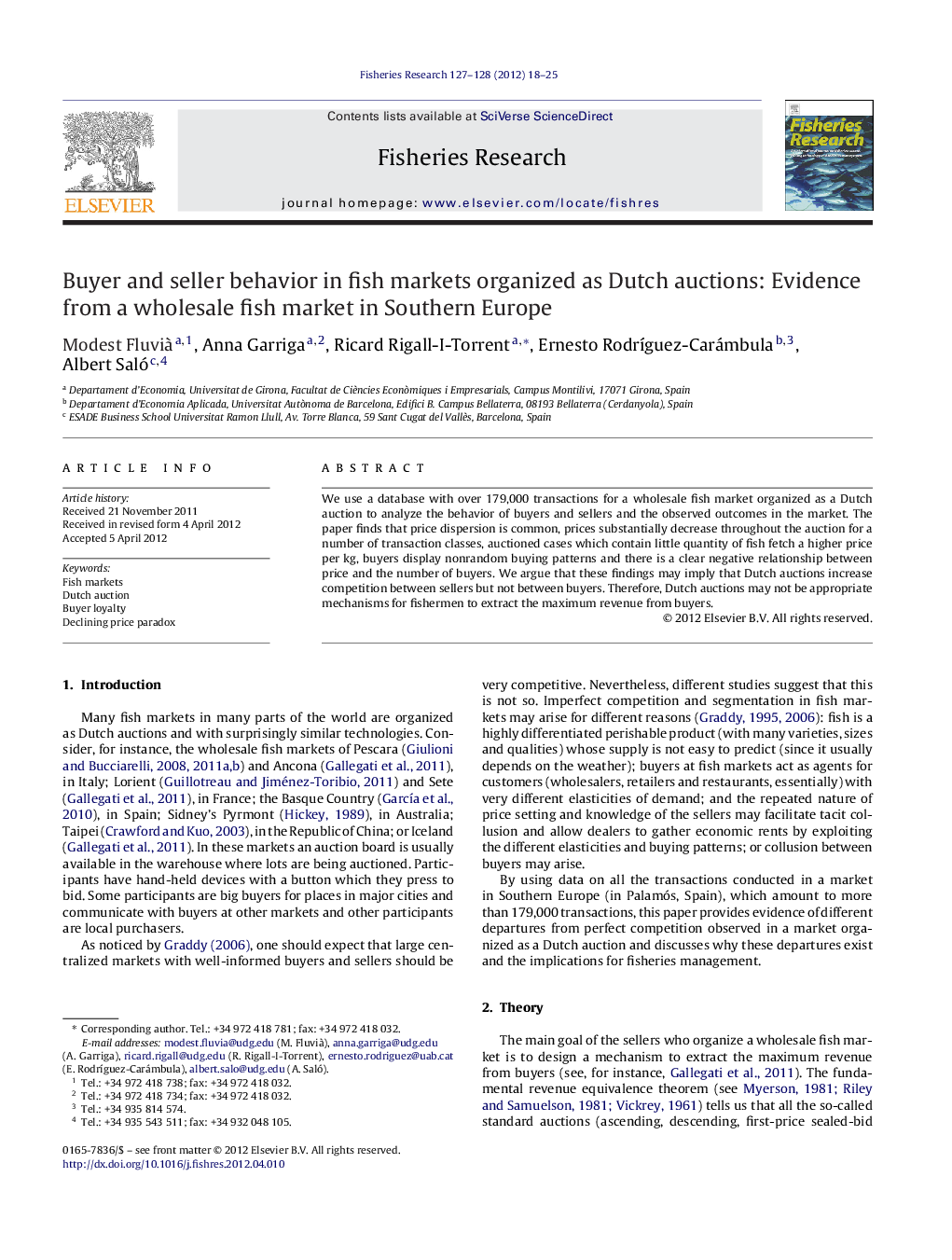| Article ID | Journal | Published Year | Pages | File Type |
|---|---|---|---|---|
| 4543335 | Fisheries Research | 2012 | 8 Pages |
We use a database with over 179,000 transactions for a wholesale fish market organized as a Dutch auction to analyze the behavior of buyers and sellers and the observed outcomes in the market. The paper finds that price dispersion is common, prices substantially decrease throughout the auction for a number of transaction classes, auctioned cases which contain little quantity of fish fetch a higher price per kg, buyers display nonrandom buying patterns and there is a clear negative relationship between price and the number of buyers. We argue that these findings may imply that Dutch auctions increase competition between sellers but not between buyers. Therefore, Dutch auctions may not be appropriate mechanisms for fishermen to extract the maximum revenue from buyers.
► We analyze over 179,000 transactions for a wholesale fish market organized as a Dutch auction. ► We find price dispersion, nonrandom buying patterns and a negative relationship between price and the number of buyers. ► We argue that Dutch auctions increase competition between sellers but not between buyers. ► We conclude that Dutch auctions may not be appropriate mechanisms for fishermen to extract the maximum revenue from buyers.
